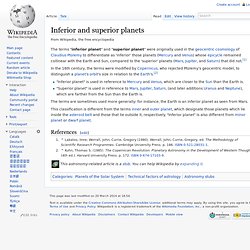

The Oort Cloud: How Big Is Our Solar System? Image Credit: R Mewaldt & P.

Liewer, JPL/NASA Humans generally like stability. We are used to our small, predictable world: Every 24 hours, we rotate on our axis; every 365 days, we revolve around the Sun. We have followed this pattern for millennia, and we will continue to follow this pattern for ages henceforth. For the most part, when we are thinking in cosmic terms, the Earth is steady and unchanging…but the same cannot be said for the rest of the solar system. Chaos reigns a mere 1.9 light-years from Earth. This portion of our neighborhood is nearly a quarter of the distance to Proxima Centauri, the nearest star to the Sun (which gives you some idea of just how far the Sun’s influence extends). This dark region of space is home to several trillion individual objects larger than 0.62 miles (1 km) and several billion with a diameter over 12 miles (20 km).
The objects in this cloud are grouped into two basic groups: short period comets and long period comets. Super Planet Crash - Can you feel the gravity? New Dwarf Planet Found at Solar System's Edge, Hints at Possible Faraway 'Planet X' Astronomers have found a new dwarf planet far beyond Pluto's orbit, suggesting that this distant realm contains millions of undiscovered objects — including, perhaps, a world larger than Earth.

The newfound celestial body, called 2012 VP113, joins the dwarf planet Sedna as a confirmed resident of a far-flung and largely unexplored region scientists call the "inner Oort Cloud. " Further, 2012 VP113 and Sedna may have been pulled into their long, looping orbits by a big planet lurking unseen in these frigid depths. "These two objects are just the tip of the iceberg," study co-author Chadwick Trujillo, of the Gemini Observatory in Hawaii, told Space.com. "They exist in a part of the solar system that we used to think was pretty devoid of matter. It just goes to show how little we actually know about the solar system. " Probing the depths These images show the discovery of the new inner Oort cloud object 2012 VP113 taken about 2 hours apart on UT November 5, 2012.
The inner Oort Cloud Planet X? Chronology of Solar Astronomy.
Planets. Asteroids, Meteors, Meterorites. Inferior and superior planets. In the 16th century, the terms were modified by Copernicus, who rejected Ptolemy's geocentric model, to distinguish a planet's orbit's size in relation to the Earth's.[2] The terms are sometimes used more generally: for instance, the Earth is an inferior planet as seen from Mars.

This classification is different from the terms inner and outer planet, which designate those planets which lie inside the asteroid belt and those that lie outside it, respectively. "Inferior planet" is also different from minor planet or dwarf planet.
Interplanetary medium. Mercury. Venus. Earth. The Moon. Mars. Asteroid belt. Jupiter. Uranus. Saturn. Neptune. Pluto. Kuiper belt. Planets beyond Neptune. Oort Cloud. Eclipses.